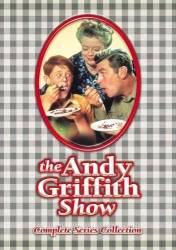Visible crew/equipment: After Andy and Barney walk out of Floyd's shop, when Andy makes a crack about Barney's ears being uneven Andy walks offscreen, then Barney shouts at him as Andy's presumably already down the block, but in their reflection in the window behind them we can see that as soon as Andy walks offscreen in this closeup, he actually stops and leans over where we see the camera's located.

Continuity mistake: When Barney disguises himself as an old woman, in the very first shot he's wearing a dress with lace and tiny flowers, but in all the following shots it's an entirely different dress with large groups of flowers. (00:17:40)






Answer: It was a joke. They were supposed to be dumb hillbillies.
Both. According to later interviews with both Andy and the Dillards band (the real name of the band that played the parts of the Darling children, of which Charlene (Maggie Peterson - Mancuso was also a member) the reason the Darling boys never had any lines was because they would've had to have been paid if they spoke. In return for appearing without lines or pay, Andy promised to get as much of their music onto the show as possible which, he did. This obviously gave them a lot of exposure.